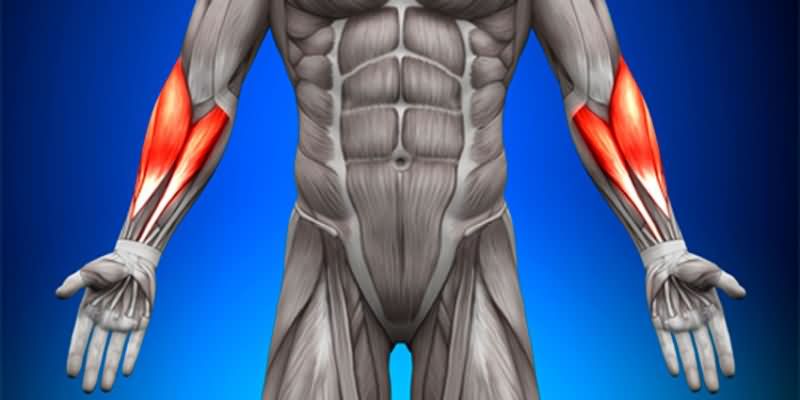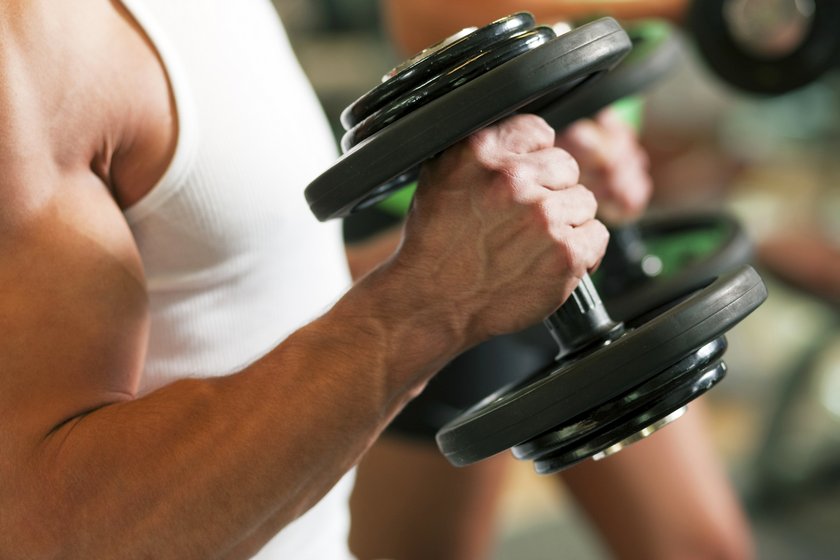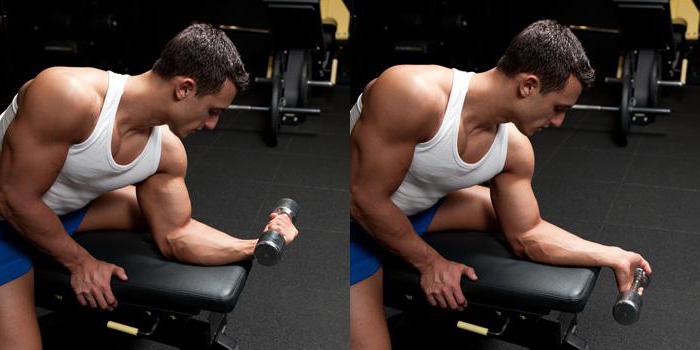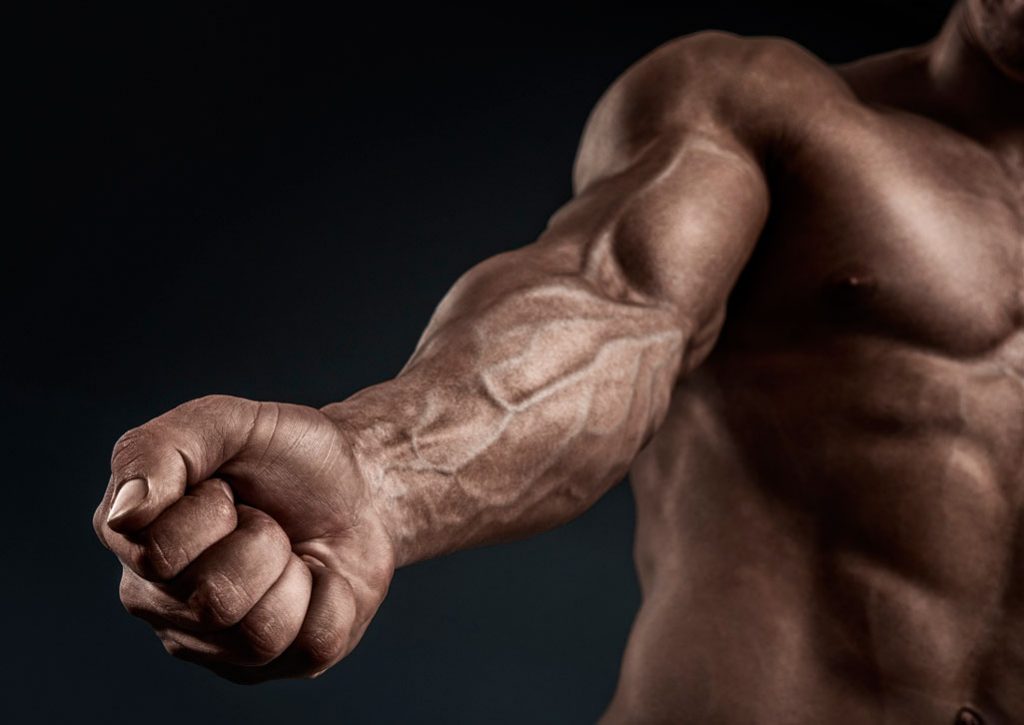
Developed forearm – a pledge of a strong, male grip, as well as a good and aesthetically attractive type of hands. To work with heavyweights in various traction exercises will also be much easier with a strong grip.
Probably you shouldn’t say that the greatest results in training can be achieved by practicing in the gym, but if for some reason you decide to study at home, read this article carefully and you may be able to get a little closer to Papaya’s forearms.
FOREARM ANATOMY
This part of the arm includes a large number of smaller and larger muscles: pronator-instep supports, shoulder-beam muscle, flexors, and extensors of the wrist and fingers. The most voluminous, brachioradialis, determines the size of the arm, its width below the elbow.

EXERCISES FOR THE MUSCLES OF THE FOREARM
On the horizontal bar
- A variety of visas. There will be an indispensable horizontal bar, which can be hung almost anywhere, or find a replacement for it in the form of any object on which to hang. Grasping the top bar grip, hold out as much as you can. Try, for example, to hang at least a minute, and in order not to be bored, do leg lifts in the wall, so you can pump the press as well. To make it even more fun, flip a towel or a strong jacket over the crossbar, and pull up while holding the fabric.
- “Pull-ups on the fingers.” We hold onto the horizontal bar only with our fingers, and by bending them we lift the weight of our own body. Exercise should be slow to avoid injury and so as not to shift the load from the muscles to the tendons. It is necessary to make 6-8 repetitions in the approach.
Dumbbells and weights for forearms
- One of the best ways to increase the forearm and strengthen the grip is to carry weights in each hand, the so-called “farmer’s walk”. Exercise is a basic, acting on all muscle groups, forcing, including, and your hands just scream from the pain, and this is exactly what we need. The load can be any: heavy dumbbells, weights, and even buckets of sand, the main thing is that it is really hard.
- Bending the arms in the wrist with dumbbells. Hands should be put on a support so that the brushes hang from the edge, then lift the brush from the dumbbells up and return to the starting position. Exercise is necessary for the development of wrist flexors.
- The extension of the arms in the wrist with dumbbells. All the same as with the exercise above, only the hands need to lift up and work, respectively, the extensors of the wrist.
- If there are collapsible dumbbells, you can remove the pancakes on one side to get a hammer and lift it with a brush holding the disassembled part. Performing is similar to the exercise “on the bar with a rope”, but a little easier because the weight can be adjusted. You can perform standing, forward, and backward.

In general, all the exercises on “stubborn” and overworked muscles are performed at a slow pace, for example, if you decide to pump a forearm with an expander:
- at a fast pace, after a week of training, you can easily do more than 100 repetitions, but not see the gain;
- at a slow pace to do 15-20 repetitions of 4 sets and growth will not take long.
Rubber bandages
You can conveniently pump your forearm with a rubber bandage, which can be found in many pharmacies:
- Exercise in this case is performed lying on the floor or mat, but you can also standing, fixing the bandage with your foot.
- A loop of a rope, for example, a sofa leg, is thrown over a fixed object.
- Exercises in this case are performed lying on the floor or rug. The bandage should be from the outside at an angle of 90 degrees to the body (if the exercise on the right forearm is harness on the right, and on the left forearm is on the left).
- You can download both by working with a brush, and with your whole forearm as if you are fighting on your hands.
How to pump forearm at home
Forearm like a calf is quite complex in development. They can “resist” loads for a long time, as we often use them in everyday life, therefore the only true way of doing exercises for the forearms is a slow pace. Only in this way the bundles, of which there are a great many in this region, will not redistribute the load on themselves. To pump your forearms at home faster, you need to apply all the above exercises, practicing every other day and alternating them. Follow the technique of execution and do not chase the scales. 2-3 exercises per workout will be enough.

Be careful that the wrists of an unprepared person are fragile enough, so if you have not trained before, then bending and unbending them using additional weight is too early. First, you need to strengthen them and train only after a thorough warm-up:
- rotation of the brushes in both directions;
- rotation of the elbows;
- stretching hands and fingers.
If fighting is not your sport, then limit yourself to a horizontal bar and a walk with weights around the apartment or gym.






